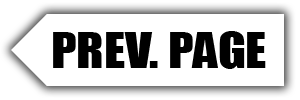
Traction control? You can't use that, can you?
I hope I don't end up accusing someone of cheating; that is not the purpose of this article. This article is to look into traction control, and if there is an illegal issue or not. I think the smart racers -- not to be confused with cheaters -- have figured a legal way to make sure their car DOES NOT spin the tire at the launch or down track. I talked to four sources on this and while getting a straight answer was pretty much impossible, it laid the groundwork for this month's Dead-On column.
If you follow drag racing you are aware that traction control is a term that the sanctioning bodies and racers that like to bitch about everything put in the same sentence with the word 'cheaters.' Actually, nothing could be further from the truth. Here is how racers with the knowledge and skills are putting together a legal traction control plan on their race cars.
If you think back a few years, the best traction control racers came up with was to overkill the rear slick size. Put a set of 14x32 slicks on your 11-second bracket car and you could not spin a tire. It wasn't too many years before the engines started getting bigger and more powerful in almost every form of drag racing. This was due to huge strides by manufacturers to fill the need for heads that flowed a lot of air out of the box to stroker cranks and aftermarket blocks at mass-production, affordable prices.
About six or seven years ago, Data Acquisition (a data-logger) became affordable and was very accurate in showing you what your car, and in particular what your rear tires (driveshaft rpm), were doing during a run. By using the data gathered during a run, you could locate a time or place on the track that your car might be slipping or spinning the tires. Now that you have the information, what can you do about it?
That is where digital ignitions with programmable ignition timing curves become very important as they allow you to remove ignition timing at an exact time and for a set amount of time. Perfectly legal, let's not forget that!
As an example, let's use a dragster (call it Digger 1) and the data we get off the data recorder or the ignition itself. Some MSD ignitions (the #75301 and the new GRID system) offer ignition memory that you can download and use to follow the rpm of the engine during a run.
As a side note, there is one ignition that has been declared illegal for NHRA competition, the MSD #7531. That is because it has a slew-rate program. This allows you to preset the rpm limits of an engine based on time that starts at the launch. As you will read, it ought to be made legal as racers are doing the same thing with other ignitions.
Back to Digger 1. For the sake of this example let's say this dragster (or door car) has a 950 HP engine and runs S/Pro and maybe some Quick 8 races at a local track. The car owner records a run, downloads it, and notices the car is spinning the tires right after the shift to high gear. That's an easy fix, especially if you are shifting the car on time and not on RPM.
Using the shift timer setting, let's say it is 2.00 seconds, you simply go into the ignition box or use the timer outputs of your delay box to activate a step retard to take 4 degrees of ignition timing out at 1.950 seconds and ramp it back in over .3 seconds.
Some ignition boxes or add-ons can be set to do that or use your delay box throttle stop timer outputs to activate the step retard just like racers with nitrous oxide do when their system comes on; the timing is kicked back to prevent detonation. The car will lose some horsepower and torque with less timing and your tire-spinning problem just went away. Of course, you might have to experiment with the amount of timing and how long you want it out, but that comes with test sessions and awareness of the data-logger information.



